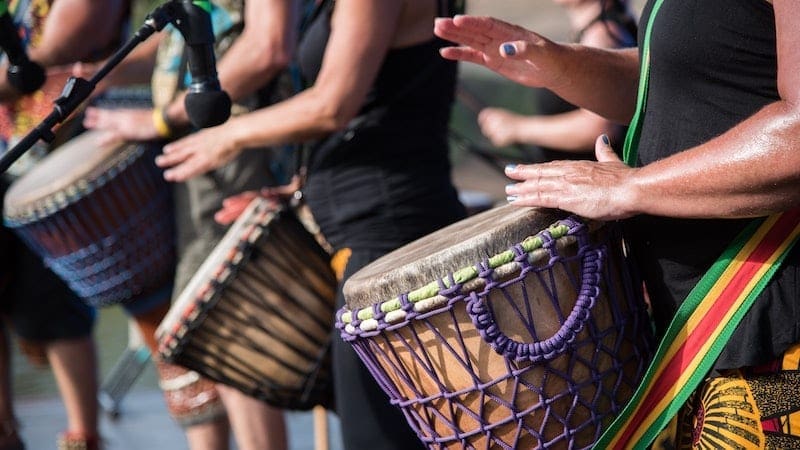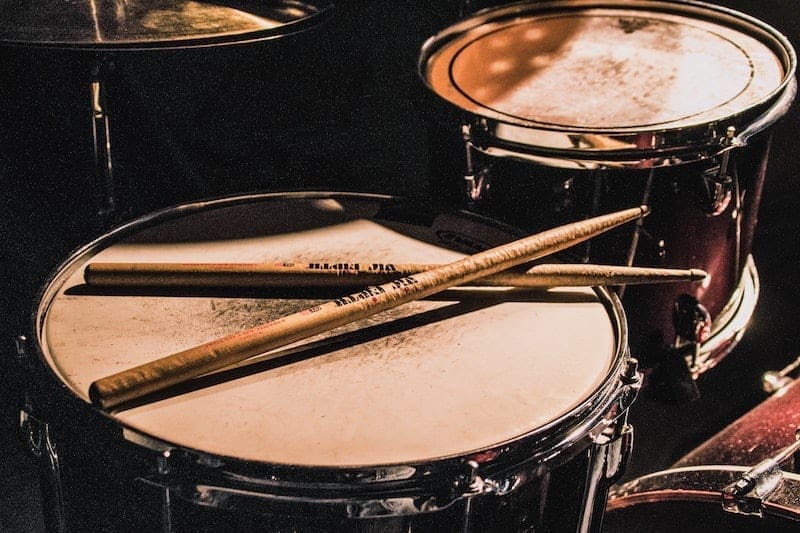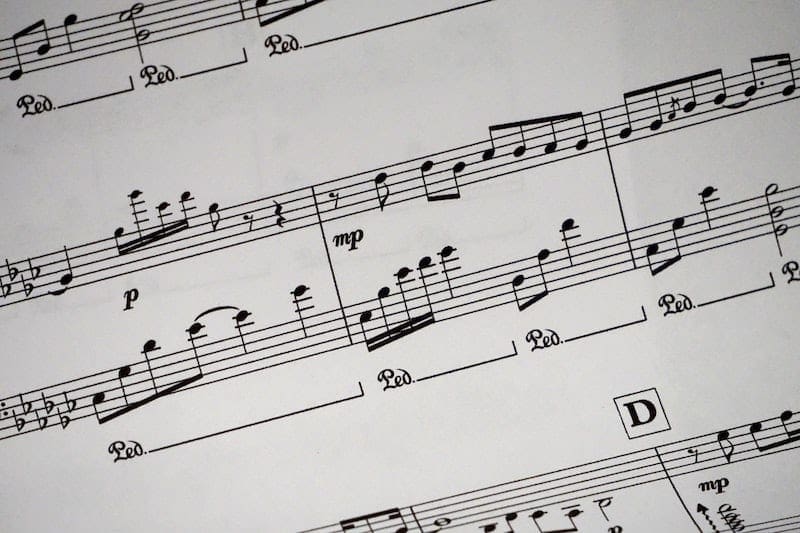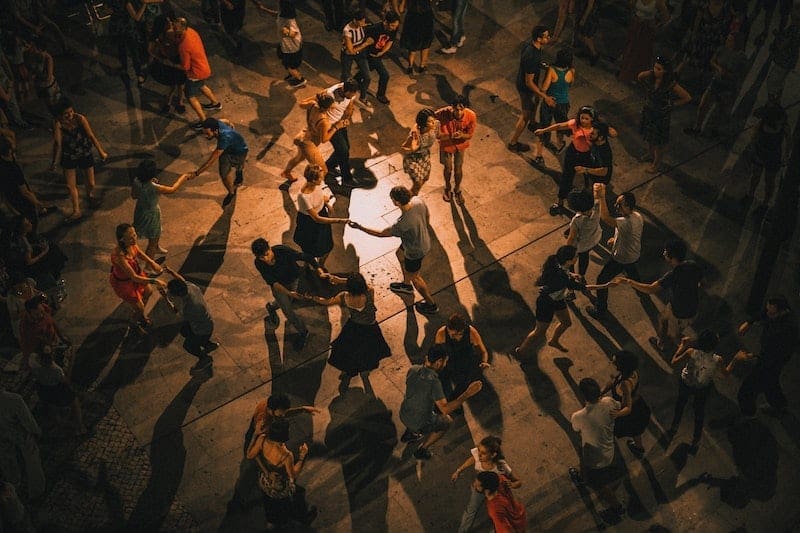
What Is Rhythm & Why Is It So Important
What all good musicians have in common is a good rhythm. Some may think that the musicality of professional musicians is unreachable however, in reality, keeping a good rhythm is just a part of developing good musicianship.
In 2016 acclaimed percussionist Dame Evelyn Gennie explored the evolution of musical rhythm through a BBC documentary. She focused on rhythm through different cultures, a fascinating concept of how it has impacted today’s music. We will explore the evolution of musical rhythm as well as take a look at how rhythm is used in contemporary music today to see why it is so important.
Rhythm is a complicated idea but there are a few simple concepts that will help you to understand it better. Read on for everything you need to know about rhythmic structure or polyrhythmic concepts when starting your creative process and discover how rhythms are subdivided, time signatures, and learning about the compound and odd time.
What is rhythm?

The best way to describe rhythm is as a controlled movement of music in time. It may be related to the division of music into regular metric portions, distinguished from the pulse, meter, and beats of music.
Rhythm is a pattern of regular or irregular pulses which happen in music from strong and weak melodic and harmonic beats. It is one of the fundamental aspects of music theory. The way music is divided into beats that repeat a specific number of times in a bar at a certain speed/tempo is considered as rhythm.
In simpler terms, when you listen to music you may feel the urge to move or tap your feet, rhythm is the music component that makes us want to do so. As a music producer, it is important to understand how rhythm works. You will need to know about great harmonies and melodies in order to produce your tracks.
What is rhythm in music
Rhythm in music is the pattern of regular or irregular pulses created by the accentuation of certain notes or beats. It is the foundation of all music and is essential for creating structure and movement. Rhythm can be created through the use of various elements such as tempo, meter, and phrasing, and can be used to create a variety of musical styles.
What is rhythm in poems
Rhythm in poems is the pattern of stressed and unstressed syllables in a line of verse. It is the beat and flow of the language that gives a poem its sound and helps to bring out its meaning. Rhythm can be used to create a sense of energy, speed, and emotion in a poem.
Rhythm is the way musicians connect

Think about a metronome as a way of understanding rhythm. It isn’t the easiest of concepts to explain but music wouldn’t be the same without it. Vibrations in the airwaves are detected by our eardrums, this is how we recognize notes, melodies, and chords.
Picture a drummer from a band playing contrasting polyrhythms in a seamless motion of rhythmic energy or a jazz pianist playing the keys by turning a beat inside out with fluidity or even an orchestra conductor who keeps eighty musicians playing in perfect time no matter what the tempo is. Rhythm is about how musicians connect when they play together.
Importance of Having Good Rhythm

So, why does a good rhythm matter? Having a good rhythm enables you to:
- Stay in time with your band
- You can play any rhythmic figure by ear
- You can sight-read good rhythms
- You won’t rush or drag the beat
A musician who aims to take their career in music to the next level requires strong musicianship and keeping a good rhythm is an important part of that. Having these skills is the difference between an amateur and a professional musician. Studio musicians understand that having a bad rhythm will affect your ability to make it as an artist.
Some of the greatest bands ever from the Beatles to Metallica, all have impeccable rhythm in common. Impeccable musicality and a sense of rhythm is the key to succeeding as an instrumentalist. Without good rhythm, you will easily get lost in the music and be out of sync. The whole band may lose tempo and even the listener will pick up on rhythm problems.
You don’t want to be worried about losing time so work on strong musicality by refining your rhythmic skills. Practice difficult rhythms and learn how to listen for good rhythm. Consider purchasing a metronome or metronome app to achieve your next level of musical precision.
Rhythm Theory
In western rhythm there are four concepts:
- Musical notes and beats
- Time signatures and Measures
- Strong and Weak Beats
- Double and Triple Meter
As soon as you master each concept you can get practicing and create some interesting rhythms for your tracks.
Musical Notes

The core of rhythm is understanding that a musical note represents the duration of time that an instrument will be played.
Consider the various symbols that are used to describe rhythm. A whole note (semibreve) is the longest playing duration and can be broken into halves (minim), quarters (crotchet), eighths (quaver), or sixteenths (semiquaver). Shortening the time that the note is occupied e.g. quarter note will occupy a quarter (fourth) of the whole note.
Time Signature
A time signature consists of two numbers that give information about how the rhythm should be counted.
The rhythm is the pattern of long and short sounds as you move through the song, whereas
pulse is a steady beat like a ticking clock which can be measured in time by counting the number of beats per minute (BPM).
Let’s consider the ‘common time’ signature – 4/4. 4/4 is also referred to as common time as it is so common. The two numbers in the time signature are often replaced by the letter C.
In 4/4, the stacked numbers tell you that each measure contains four quarter-note beats. The number four on top suggests there are four pulses to one bar, and the number four on the bottom says that these pulses are measured in terms of quarter notes. To count 4/4 meter, every time you tap the beat, you are tapping the equivalent of a one-quarter note.
Time signatures do go beyond 4/4. With 3/4 being considered ‘Waltz time’ and 2/4 ‘March time’.
Strong and weak beats
Once you understand time signatures you can learn how rhythm works within a bar. Not all beats are formed equally, for music to move forward, you need to make the movement happen, this is where strong and weak beats come in.
Within a bar, there are strong beats that drive the pulse and weak beats that counteract the pulse. You will have heard the terms ‘upbeat’ and ‘downbeat; before. In really simple terms, the upbeat is the beat right before the downbeat (beat 1).
For instance, in any time signature, the first beat is going to be really strong. In the common signature, the first beat is slightly heavier which is why we call it ‘downbeat’.
Consider a conductor and think about the way they move their baton. Up for the upbeat, and down for the downbeat. They would move their hand down for the beat count ‘1, 2, 3’ on beat ‘4’ the upbeat, they raise their hand.
As a general rule, every time signature has its pattern of strong and weak beats, with the first beat always considered to be strong. The exception is syncopation, which we will cover later on. It turns everything upside down so strong means weak.
Duple and Triple Meter
We have mentioned 4/4 time but if you want to use compound time and odd time in a track, you need to get familiar with how beats within any measure are felt in twos or threes. This should be a bit clearer now you know how strong and weak beats work.
A duple meter is broken into two beats per measure; a triple meter into three beats per measure; and a quadruple meter into four beats per measure. A strong-weak pattern indicates a duple meter is being played. As the bar is split into two duplexes, 4/4 time might be referred to as quadruple time.
3/4 bar is one triple group – strong, weak, weak. An example of this is ‘Perfect’ by Ed Sheeran.
Any rhythmic pattern or time signature can be divided into meters of two or three. The meter is just one way that beats are subdivided within a measure, simple and compound describe how a beat is broken down into smaller subdivisions.
Simple and Compound
As you know the meter is how the rhythm is felt in terms of strong and weak beats and simple and compound time directly correlate to a meter. Common rhythms in compound time are 6/8, 9/8, and 12/8. In compound time, each beat is a dotted note.
Simple and compound time commands whether shorter notes (usually eighth notes) are divided into groups of two or three.
Simple time groups eighth notes into groups of two
4/4 time is simple duple time. Its eight notes are counted as one-and, two-and, three-and, four-and. Whereas 3/4 time is simple triple time and counted one-and, two-and, three-and.
Compound time groups eighth notes into groups of three.
Examples of compound time are 6/8 and 9/8. In 6/8 compound duple time, notes are subdivided into two groups of three eighth notes.
The eighth notes could be counted one-and-a, two-and-a.
Although 6/8 time has six quaver beats in the bar, the beat is given by two dotted crotchets. The dotted crotchet beats are on quavers one and four. 6/8 time includes tunes recorded in 6/8 including ‘Fallin’’ by Alicia Keys and “We Are the Champions” by Queen.
9/8 compound triple time notes are subdivided into three groups of three eighth notes.
The eighth notes are counted one-and-a, two-and-a, three-and-a.
Odd Time
Unusual time signatures can help further a musician’s career. With a combination of familiar notes and beats, you can create new sounds and songs. Take a listen to ‘The Ocean’ by Led Zeppelin. The song’s unusual 7/8 measures are used to build a combination of blues and heavy rock sounds.
To create odd time signatures, you simply combine simple and compound time. Any odd time signature follows a pattern based on some combination of duples and triples.
All you need to know is how each measure is subdivided into groups of two or three.
Consider the 5/8-time signature. It can be cut down to either a duple grouping followed by a triple grouping or a triple grouping followed by a duple grouping. Try counting this out loud, for a 5/8-time signature, you can count it either as one-and two-and-a, or, one-and-a two-and.
Syncopation
Often described as being offbeat syncopation is the emphasis of a note which would usually not be emphasized. The time signature in music indicates a regular recurrence & pattern of strong and weak beats. Whereas, syncopated rhythm emphasizes weak beats going against the time signature pattern.
Offbeat syncopated rhythms accent the notes between the strong and weak beats. Jazz and Disco tend to be syncopated with the two and four of a 4/4 bar accented instead of the one and two. In reggae, the offbeat guitar downstrokes known as ‘skank’ are important when producing a distinctive reggae sound such as ‘Jammin’ by Bob Marley.
To play in syncopation it helps to count the off beats, in a 4/4 bar you would count it ‘one and two and three and four and’. The ‘and’ indicates the spaces between the strong and weak beats.
Movement and Rhythm

Rhythm is about togetherness and feeling the music rather than just knowing how to read sheet music and notation.
It’s really great to have a theoretical understanding of rhythm but the easiest way to develop rhythmic sensibilities is to practice your instrument every day with a metronome, it helps you to keep in time so you don’t end up rushing.
If you are still finding it difficult don’t be afraid to step away from your instrument and clap it out, this will develop good musicianship.
Other things you can do are have a jam session with others, as you hear what they are playing you can communicate with them through sound. This is a great way to develop your rhythmic sensibilities. When you can also establish a steady beat or pulse, including tapping your toes when you are playing.
Work on complex rhythms, and count to four out loud to the beat. Once you’ve established a steady beat and your foot is still tapping, attempt to clap the attacks for the rhythm at the correct beats.
Learning to move through rhythms is a step to gaining a good understanding of rhythm. A good example is swing jazz music which helped to develop a group of dances known as swing dance.
East Coast Swing is a six-beat dance, two consecutive triple-step moves, followed by a ‘rock step’ is danced to swing music in 4/4 time. Without an understanding of rhythm, the movement would be out of time.
So, there you have it, rhythm is not the simplest of concepts but once you grasp it you will be on your way to becoming a great musician. Rhythm is a very important part of musicianship! You can search for BPM to understand more by using the BPM Tapper tool on Music Gateway. Try it today.
For musicians and producers an online metronome tool is essential when recording, try Music Gateway’s online metronome tool here.










